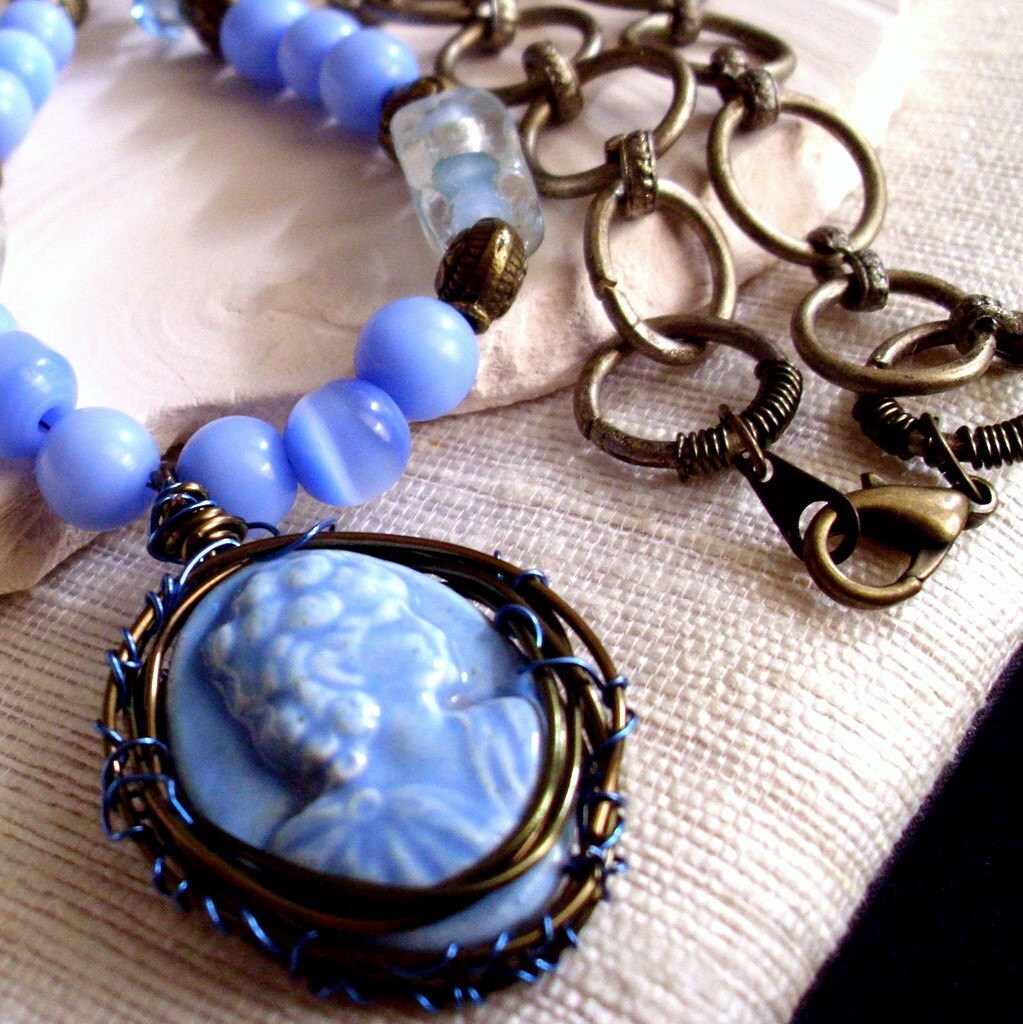Here's my interpretation:

Available here.
The cameo is a vintage glazed ceramic piece I've had for donkey's years, worked into one of my nest-type bezels. When I'm making those I'm always convinced they're not working, but they almost always do ... The wirework on the chain is not just decorative, but secures the connections between the chain and the beading in a graceful, textural manner.
Cameos are an old art form. In the pre-industrial age, cameos were not the molded-resin pretties we are familiar with today, but were hand-carved from ivory, shell or stones. There is some (possibly apocryphal) record of Alexander the Great presenting his Persian lover, Bagoas, with a ring containing a portrait cameo of himself carved in chalcedony. You can still find some natural-material cameos, like these black lip shell examples, but hand-carved ones are rarer than ever.
More on cameos, plus multiculturalism in Victorian accessories, on Monday!
No comments:
Post a Comment